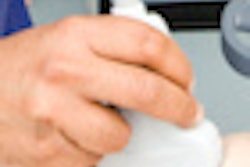Danish researchers have found a sort of Goldilocks solution to the question of whether abdominal aortic aneurysm (AAA) screening is cost-effective if performed repeatedly rather than just once in a patient's lifetime. The most cost-effective scenario is twice, they reported on Friday in the British Medical Journal.
AAA screening, usually performed using ultrasound, also saves lives when patients are rescreened every five years beginning at age 65, according to the researchers, but at nearly twice the cost per quality-adjusted life year (QALY) of being scanned just twice.
A single AAA screening for men 65 and older is already known to be cost-effective, and national screening programs are currently being implemented in England and Scotland. However, many other European countries, such as Denmark, have not yet issued guidance on the practice.
In the new study, the Danish team aimed to assess the benefits and cost-effectiveness of four different screening strategies for AAA. The researchers used a prediction model with a hypothetical population of 100,000 men 65 years and older to test the strategies: no screening, once-per-lifetime screening, twice-per-lifetime screening with a five-year interval, and lifetime screening every five years (BMJ, 6 July 2012).
The study looked at costs and benefits in quality-adjusted life years and health outcomes, wrote Rikke Søgaard, from the University of Southern Denmark, and colleagues.
Screening was highly cost-effective versus no screening, the group reported. The model estimated a 92% probability that some form of screening would be cost-effective at a threshold of 24,790 euros ($31,460 U.S.). If subjects with an aortic diameter of 25 mm to 29 mm at the initial screening were rescreened once after five years, 452 men of the 100,000 initially screened would benefit from early detection, whereas lifetime rescreening every five years would benefit 794 men per 100,000.
The authors estimated that if men with a high risk of AAA rupture risk were screened once, an additional 452 aneurysms per 100,000 individuals would be detected, with an associated incremental cost-effectiveness ratio of 12,625 euros ($15,500) per QALY, well within the cost-effectiveness threshold of 25,218 euros ($30,950) set by the U.K. National Institute for Health and Clinical Excellence (NICE). However, lifetime repeat screening would cost 37,430 euros ($45,950) per QALY.



















